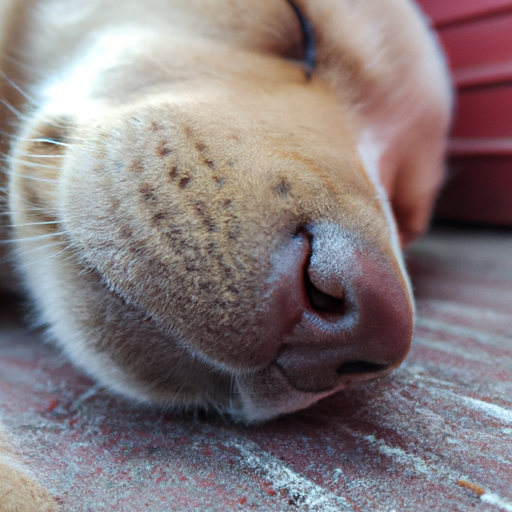Have you ever noticed how your canine friend seems to breathe faster when they’re deep in slumber? You might wonder if it’s a cause for concern or just a normal facet of their sleep cycle. As a caregiver, understanding your pet’s behavior can not only alleviate your worry but also ensure your dog’s health and well-being. This comprehensive guide will delve into why dogs breathe fast when they sleep and what it signifies.
Understanding a Dog’s Normal Breathing Pattern
Before we delve into the specifics of a dog’s sleep breathing patterns, it’s crucial to understand what constitutes normal breathing for your furry friend. This baseline will help you distinguish between normal and abnormal breathing.
Typically, a healthy dog breathes between 15 to 30 times per minute. However, this rate can vary depending on the dog’s breed, size, age, and overall health.
Here are some factors that can influence a dog’s breathing rate:
- Size: Smaller dogs often have a faster breathing rate than larger dogs.
- Age: Puppies tend to breathe faster than older dogs.
- Health Conditions: Certain health conditions such as heart disease, respiratory disorders, or obesity can cause a dog to breathe faster.
Why Dogs Breathe Fast When They Sleep
Now, let’s get to the heart of our discussion – why do dogs breathe fast when they sleep? The answer lies primarily in their REM (Rapid Eye Movement) cycle.
REM Cycle and Fast Breathing
It’s during the REM stage of sleep when dogs (and humans) experience dreams. Dogs in this stage may twitch, move their legs, or even bark or whimper. They also tend to breathe faster. This is completely normal, and you should let your dog sleep unless they seem distressed.
Emotional Responses
Sometimes, dogs may breathe faster in their sleep due to emotional responses. If they are dreaming, they may experience emotions such as excitement or fear that can cause an increase in their breathing rate.
When to Worry About Your Dog’s Fast Breathing
While fast breathing during sleep is often normal, there are instances when it could indicate a health issue:
- Your dog is breathing faster than their usual rate even when awake.
- Fast breathing is accompanied by other signs of distress, such as coughing, panting, or difficulty breathing.
- Their gums or tongue turn blue, indicating a lack of oxygen.
If you notice any of these signs, seek veterinary attention immediately.
How to Monitor Your Dog’s Breathing
Observing your dog’s daily behavior and sleep cycles is the first step in monitoring their breathing. Here are some tips:
- Know the baseline: Be aware of your dog’s normal breathing rate when they are calm and at rest.
- Check during sleep: Observe your dog’s breathing pattern during different stages of sleep.
- Look for signs of distress: Monitor for any signs of difficulty breathing, such as panting, wheezing, or coughing.
FAQ
Q: Is it normal for puppies to breathe fast when sleeping?
A: Yes, it’s quite common for puppies to breathe faster during sleep, especially during their REM cycle. However, if you notice any signs of distress, consult a vet.
Q: Can weather affect my dog’s breathing rate?
A: Indeed, hot and humid weather can cause dogs to pant more and breathe faster. Always ensure your dog has access to clean water and a cool environment.
Q: Should I wake my dog up if they’re breathing fast during sleep?
A: It’s best not to disturb your dog during their REM cycle. However, if they appear distressed or their breathing doesn’t slow down after waking up, seek veterinary advice.
Q: Can anxiety cause my dog to breathe faster?
A: Yes, stress and anxiety can lead to increased breathing rates in dogs. If you believe your dog is anxious, it’s crucial to identify and address the source of their stress.
This comprehensive guide should help you better understand your dog’s sleep breathing patterns, ensuring a peaceful and healthy life for your furry friend.



